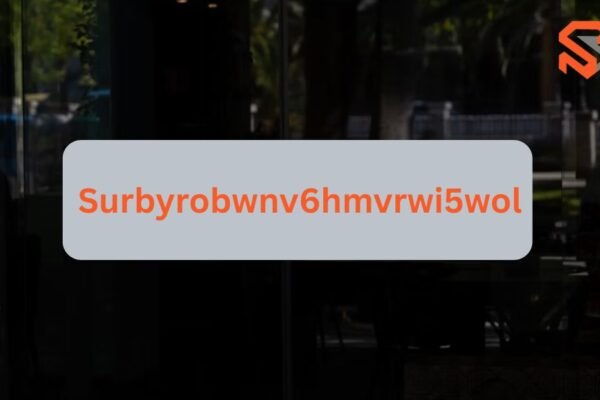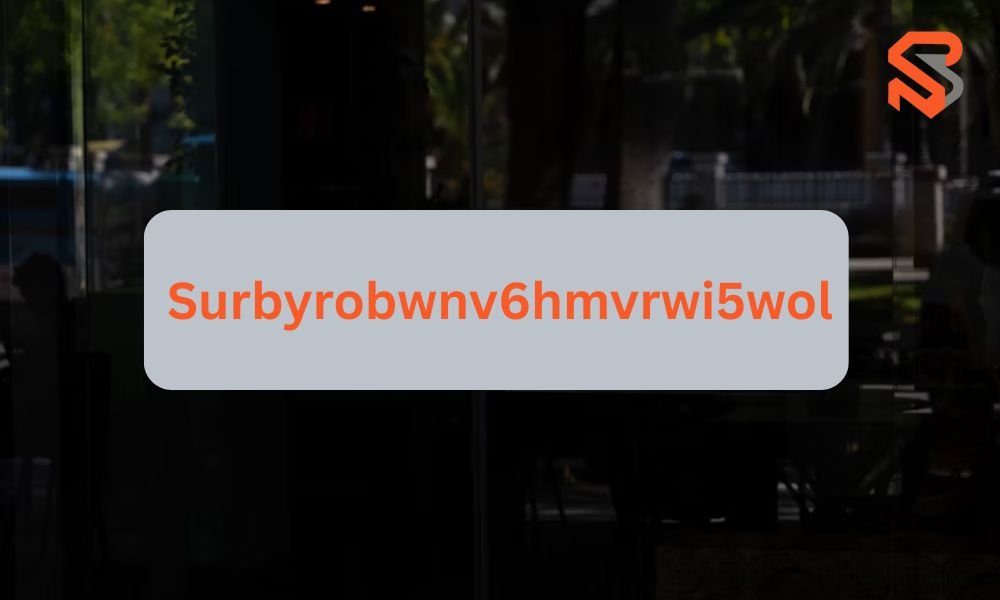

A Complete Understanding of content://cz.mobilesoft.appblock.fileprovider/cache/blank.html
Introduction
In the ever-expanding world of digital technology, every piece of data inside a smartphone follows a structured journey. Modern mobile operating systems are designed to balance performance, security, and usability in ways that were once unimaginable. One example that captures this complexity is content://cz.mobilesoft.appblock.fileprovider/cache/blank.html.
This path may look like a long code sequence, but behind it lies a sophisticated system that controls how files are created, accessed, and protected. It represents the way Android devices handle content securely through file providers and cached data. Understanding content://cz.mobilesoft.appblock.fileprovider/cache/blank.html means exploring how mobile technology protects privacy, optimizes performance, and ensures seamless functionality.
In this article, we will analyze what this address means, why it exists, how it works within Android’s internal file structure, and why it is important for users and developers alike.
Breaking Down the Structure
The keyword content://cz.mobilesoft.appblock.fileprovider/cache/blank.html is not a web address and cannot be opened through a browser. It is a content URI, a specific kind of identifier used by Android to manage files internally.
Each segment of this string carries meaning:
-
content://
This prefix signals that the data is handled by Android’s content provider framework rather than direct file access. It ensures that every operation goes through a secure, system-controlled process. -
cz.mobilesoft.appblock
This part represents the application’s package name. In Android, each app has its own namespace that isolates its data. The prefix “cz” indicates the app’s country code origin, likely from the Czech Republic. -
fileprovider
The file provider is a special Android component that safely shares files between applications. Instead of revealing physical file paths, it creates protected links like content://cz.mobilesoft.appblock.fileprovider/cache/blank.html, allowing controlled and temporary access. -
cache/blank.html
The final part shows that the file resides inside the app’s cache directory and that its name is “blank.html.” This is likely a lightweight HTML file used temporarily for displaying or initializing app content.
Together, this structure forms a controlled, secure way of referencing cached data without exposing the underlying storage system.
What Is a File Provider
The file provider mentioned in content://cz.mobilesoft.appblock.fileprovider/cache/blank.html is part of Android’s secure data-sharing system. Before file providers existed, applications accessed files directly from the device’s storage. That approach often created serious security vulnerabilities, since one app could potentially read another app’s private files.
To fix this, Android introduced the file provider mechanism. A file provider acts as an intermediary. It creates a temporary, secure URI that other apps can use to access specific files without knowing their real physical locations. The content:// prefix identifies these URIs as controlled by the operating system, not the user.
For example, when one app wants to share a cached HTML file with another app, it will generate a URI like content://cz.mobilesoft.appblock.fileprovider/cache/blank.html. The receiving app can then open and read the file through this safe pathway, but only if granted proper permission.
This approach not only keeps data private but also standardizes how apps exchange files. It prevents unauthorized access and enforces accountability in every transaction.
Understanding the Cache Folder
The word cache in content://cz.mobilesoft.appblock.fileprovider/cache/blank.html refers to temporary storage used by applications to speed up performance.
When an app performs tasks repeatedly, it saves small bits of data in the cache. This can include images, scripts, HTML layouts, or configuration details. Instead of downloading or regenerating that data each time, the app retrieves it from cache, which saves time and resources.
The file blank.html may serve multiple roles. It could be:
-
A placeholder web page for in-app browsers
-
A neutral display used when blocking unwanted content
-
A blank structure used during layout initialization
-
A testing file for rendering empty or clean interfaces
By storing blank.html in the cache, the app avoids re-creating it constantly, ensuring faster startup times and reduced processing load.
Security and Privacy Aspects
One of the greatest strengths of content://cz.mobilesoft.appblock.fileprovider/cache/blank.html lies in its contribution to mobile security. Direct file access is risky because files often contain sensitive information. If an app could directly access all files, malicious software could easily steal personal data.
With the content:// system, this risk is virtually eliminated. Access to files like content://cz.mobilesoft.appblock.fileprovider/cache/blank.html is mediated by Android’s permission model. Each application must request specific rights, and users have the authority to grant or deny access.
Furthermore, permissions granted through file providers are temporary. Once the session ends, the link becomes invalid. This means that even if a URI leaks, it cannot be reused indefinitely.
In this way, the content://cz.mobilesoft.appblock.fileprovider/cache/blank.html structure represents a commitment to secure data handling, where privacy is built directly into the design of the system.
Practical Uses
The specific URI content://cz.mobilesoft.appblock.fileprovider/cache/blank.html could appear in several scenarios within an application’s workflow:
-
Web Rendering – Some apps display web content using internal web views. They often load a local “blank” HTML file before injecting live data.
-
Content Blocking – Since the term “appblock” suggests control or restriction, this URI might be part of a process that displays a neutral page when access to certain online content is restricted.
-
Temporary File Creation – During testing or background operations, an app may create and delete cached HTML files as placeholders.
-
Offline Display – When an internet connection is unavailable, the app could use blank.html as a base layout for offline mode.
In all cases, the use of content://cz.mobilesoft.appblock.fileprovider/cache/blank.html ensures that these actions happen securely and efficiently.
Advantages of the System
The design behind content://cz.mobilesoft.appblock.fileprovider/cache/blank.html reflects several major advantages of Android’s file management philosophy:
-
Enhanced Security – Only authorized apps can access specific files.
-
Simplified Sharing – Developers can easily share files between apps without worrying about compatibility.
-
Improved Privacy – Users remain protected from unauthorized data exposure.
-
Performance Optimization – Cached files speed up loading and reduce network usage.
-
Centralized Control – The operating system monitors every file transaction, allowing detailed logging and control.
These combined benefits make the content URI system one of the cornerstones of Android’s secure architecture.
Developer’s Viewpoint
For developers, using content://cz.mobilesoft.appblock.fileprovider/cache/blank.html represents a structured, predictable way to manage data. Instead of building complex file management systems, they can rely on Android’s built-in file provider mechanisms.
Developers can use APIs such as ContentResolver to open streams, read, or modify content through these URIs. For example:
In this case, uri might refer to content://cz.mobilesoft.appblock.fileprovider/cache/blank.html. This command gives access to the file’s data without ever revealing its actual physical path.
It is a clear demonstration of how Android merges convenience with security in a single framework.
User Experience Perspective
From a user’s perspective, content://cz.mobilesoft.appblock.fileprovider/cache/blank.html operates silently in the background. They never see this path directly, but they benefit from it constantly.
Whenever an app loads quickly, preserves settings, or opens web content without errors, it is likely because cached data like blank.html is being handled properly. The invisible network of content URIs allows apps to deliver a smooth, efficient, and secure experience.
The design ensures that the user’s data stays private while performance remains strong, creating a balance between comfort and control.
Ethical Responsibility in Data Management
The presence of structures such as content://cz.mobilesoft.appblock.fileprovider/cache/blank.html highlights a deeper principle — ethical responsibility in data management. In the modern digital landscape, ethics and technology are intertwined.
Developers must design systems that respect user privacy and transparency. File provider mechanisms achieve exactly that by enforcing controlled access. Each time an app interacts with content://cz.mobilesoft.appblock.fileprovider/cache/blank.html, it does so through explicit consent and verification.
This approach builds trust between users and developers, proving that technology can be both powerful and respectful.
Common Errors and Troubleshooting
Sometimes, users or developers may encounter errors involving content://cz.mobilesoft.appblock.fileprovider/cache/blank.html. Common issues include:
-
File Not Found: The cache file may have been deleted by the system or app cleanup.
-
Permission Denied: The app attempting to access the file lacks proper permission.
-
URI Expiration: The temporary access token may have expired.
-
Storage Cleanup: System cache maintenance might remove unused files automatically.
To solve such problems, clearing app data, granting storage permissions, or re-generating the URI usually restores functionality. These issues are normal because cache files are temporary by nature.
Technical Insights into Cache Lifecycle
Android manages cached files such as blank.html dynamically. The system automatically deletes cache files under low storage conditions or when apps no longer require them.
This ensures efficient use of space while maintaining high performance. When a cache file like content://cz.mobilesoft.appblock.fileprovider/cache/blank.html is deleted, the app recreates it as needed. The user rarely notices these behind-the-scenes operations.
This adaptive behavior demonstrates how Android intelligently maintains balance between efficiency and resource management.
Integration with Other Applications
Because content://cz.mobilesoft.appblock.fileprovider/cache/blank.html is a content URI, other apps can access it if permitted. For instance, a browser could render it, or a debugging tool could analyze it. However, access always depends on permissions granted through Android’s file provider system.
Such integration allows different parts of the operating system to work together seamlessly. It also promotes modular design, where one app’s output can safely become another app’s input.
The Future of File Provider Technology
The philosophy behind content://cz.mobilesoft.appblock.fileprovider/cache/blank.html continues to evolve. As mobile operating systems become more intelligent, file providers will likely include enhanced encryption, AI-driven permission systems, and predictive caching.
In the future, devices may automatically classify and prioritize cache files like blank.html based on user behavior, energy efficiency, and storage optimization. The same structure could even expand to cloud environments, allowing consistent data handling across devices.
This evolution will maintain the same goal — to keep content safe, efficient, and universally accessible within defined boundaries.
Symbolism of content://cz.mobilesoft.appblock.fileprovider/cache/blank.html
Beyond the technical explanation, content://cz.mobilesoft.appblock.fileprovider/cache/blank.html symbolizes order in the digital realm. It reminds us that even the smallest file inside a smartphone is governed by strict logic and careful control.
Every modern system depends on such invisible mechanisms. They create harmony between human convenience and digital precision. The path itself might seem minor, yet it embodies decades of technological progress and security research.
It represents the invisible architecture of trust that allows billions of devices to function safely every day.
Conclusion
The content path content://cz.mobilesoft.appblock.fileprovider/cache/blank.html may appear technical, but it tells an important story about how Android handles data, protects privacy, and maintains performance.
It stands for a secure bridge between applications, a tool for managing cached files, and a symbol of responsible software engineering. Every time an app loads faster or shares data safely, systems like this work silently behind the scenes.
Through the integration of file providers, content URIs, and cache management, Android ensures that every operation is safe, consistent, and efficient.
Understanding content://cz.mobilesoft.appblock.fileprovider/cache/blank.html is understanding the invisible foundation of mobile computing — a structure that transforms complexity into simplicity and data into trust.














